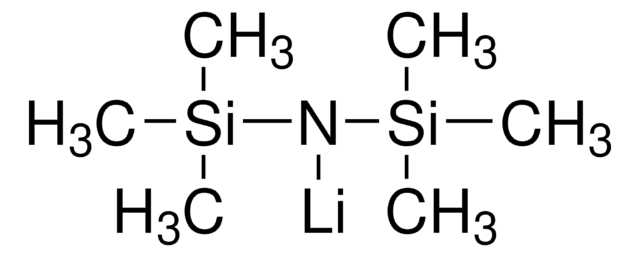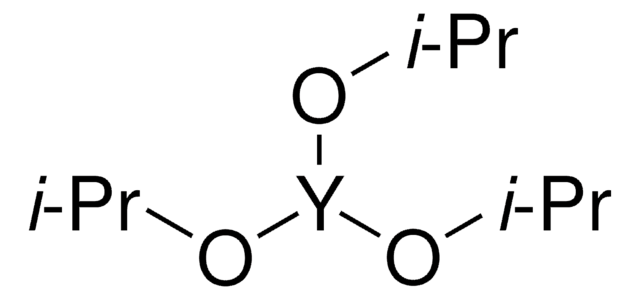524514
Tris[N,N-bis(trimethylsilyl)amide]yttrium
Sinónimos:
YTDTMSA
About This Item
Productos recomendados
Quality Level
form
powder
composition
Y, 14.7-16.5% EDTA titration
reaction suitability
core: yttrium
reagent type: catalyst
mp
161-166 °C (lit.)
SMILES string
C[Si](C)(C)N([Y](N([Si](C)(C)C)[Si](C)(C)C)N([Si](C)(C)C)[Si](C)(C)C)[Si](C)(C)C
InChI
1S/3C6H18NSi2.Y/c3*1-8(2,3)7-9(4,5)6;/h3*1-6H3;/q3*-1;+3
InChI key
ALBMVGKOSBREQT-UHFFFAOYSA-N
¿Está buscando productos similares? Visita Guía de comparación de productos
signalword
Danger
hcodes
Hazard Classifications
Flam. Sol. 1 - Skin Corr. 1B - Water-react 2
supp_hazards
Storage Class
4.3 - Hazardous materials which set free flammable gases upon contact with water
wgk_germany
WGK 3
flash_point_f
-9.9 °F - closed cup
flash_point_c
-23.3 °C - closed cup
ppe
Eyeshields, Faceshields, Gloves, type P3 (EN 143) respirator cartridges
Elija entre una de las versiones más recientes:
¿Ya tiene este producto?
Encuentre la documentación para los productos que ha comprado recientemente en la Biblioteca de documentos.
Nuestro equipo de científicos tiene experiencia en todas las áreas de investigación: Ciencias de la vida, Ciencia de los materiales, Síntesis química, Cromatografía, Analítica y muchas otras.
Póngase en contacto con el Servicio técnico![Zinc bis[bis(trimethylsilyl)amide] 97%](/deepweb/assets/sigmaaldrich/product/structures/294/819/cd22dd81-f7c8-4f0c-944e-1b74c1ad5e6d/640/cd22dd81-f7c8-4f0c-944e-1b74c1ad5e6d.png)
![Tris[N,N-bis(trimethylsilyl)amide]samarium(III) 98%](/deepweb/assets/sigmaaldrich/product/structures/285/605/c4a36589-b92a-45c3-83a9-806ca49f392d/640/c4a36589-b92a-45c3-83a9-806ca49f392d.png)








